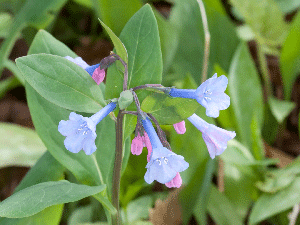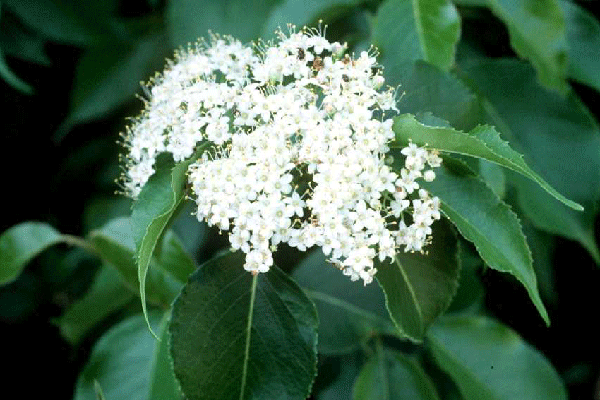Many of the shady areas in our landscapes aren’t just short on sunlight. The overlying cover of buildings, fences, trees or tall plants can also limit root space, nutrients, airflow and especially moisture. Fortunately there are many plants that can thrive in these areas. Hosta, astilbe and coral bells are some of the most commonly used, but there are many others to try.
Shrubs for Shade
Understory shrubs with spring blossoms include viburnum, black jetbead, coralberry, snowberry, dogwood, St. Johns wort, witch hazel, Kerria and Carolina allspice. Many of them have fruits that persist into winter and clove currant (Ribes odoratum) is a native plant with edible summer fruit.
 Early-flowering Virginia bluebells (above), celandine poppy and Brunnera (behind) will give way to other shade plants in summer.
Early-flowering Virginia bluebells (above), celandine poppy and Brunnera (behind) will give way to other shade plants in summer.Perennials for Shade
Early-blooming perennials for shady areas include woodland phlox, Lenten rose, columbine, foam flower (Tiarella), Brunnera, celandine poppy (aggressive re-seeder), Epimedium, Virginia bluebells and bleeding heart. For summer bloom, daylilies can bloom in fairly dense shade and foxglove, Bergenia, Geranium and sedum all offer beautiful flowers. For late bloom, turtlehead and toad lily will bloom far into the fall.
Variegated Foliage Brightens up Shaded Areas
Shady areas tend to be dark so textured or variegated foliage can brighten them up. Coral bells, variegated Solomon’s seal, hosta, coral bells and ferns offer a wide variety of colors, sizes and textures. Ferns and corydalis have finely cut foliage that contrasts well with broader-leaved plants, and corydalis has delicate yellow flowers from early summer into fall.
Groundcover Plants for Shade
Shade plants of almost any height can work as groundcovers since they tend to be grown for foliage more than flower, and their tendency to spread and cover will help reduce weeds. For lower groundcovers, good options are lamb’s ear, lady’s mantle, periwinkle, Lamium, lily of the valley, Pachysandra, snow-in-summer, ajuga, lady’s mantle, wild ginger, Epimedium and perennial Geranium.
When planting shade-lovers, consider adding organic matter to increase moisture retention and enrich the soil. And keep in mind that even plants for dry shade need regular watering until their roots are well-established.
The Nebraska Forest Service strives to enrich lives by protecting, restoring and utilizing Nebraska's tree and forest resources.

